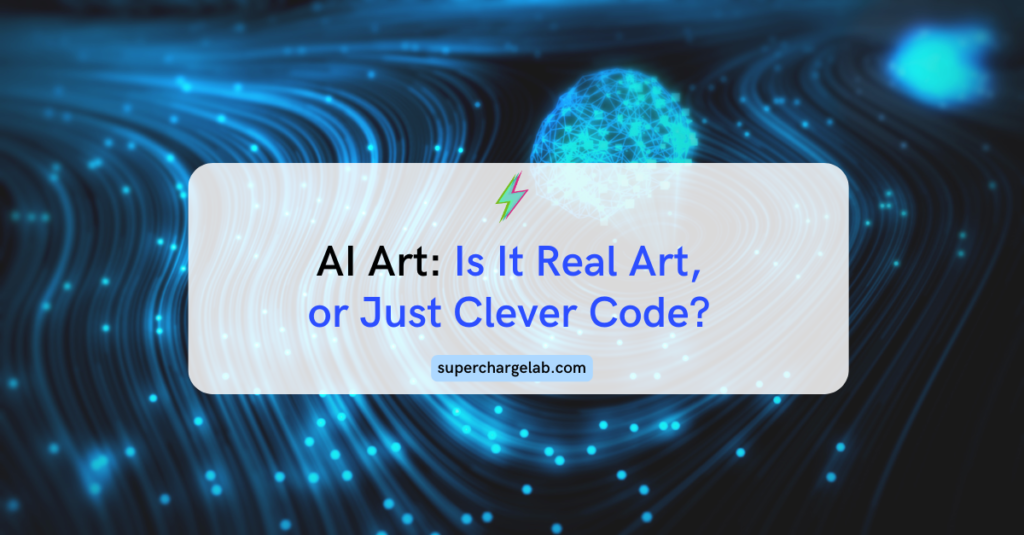
We’ve all seen those mind-blowing images created by artificial intelligence (AI) – breathtaking landscapes, portraits that seem to capture the human soul, even abstract works that evoke powerful emotions. But as AI-generated art floods our social media feeds and digital galleries, a fundamental question arises: Is it real art?
- The Rise of AI Artists
AI art generators are now more accessible than ever. With a few clicks, anyone can conjure up images that rival those of seasoned artists. This democratization of creativity has sparked a passionate debate. Some hail AI as a revolutionary tool, empowering anyone to express themselves artistically, regardless of their skill level. Others dismiss AI-generated art as soulless imitations, lacking the emotional depth and human touch that define true art. - Collaboration or Competition?
One thing is clear; AI is changing the artistic landscape. But is it replacing human artists, or simply giving them a new tool to work with? Many artists are embracing AI as a collaborator, using it to generate ideas, experiment with new styles, and push the boundaries of their creativity. They argue that AI is just another tool, like a paintbrush or a camera, and that the true artistry lies in how it’s used.
However, others worry that AI could devalue the role of the artist. If anyone can create stunning images with a few lines of code, what does that mean for the years of training and practice that human artists undergo. Will AI art ever be as valuable as art created by human hands?
- The Human Touch
One of the main arguments against AI art is that it lacks the emotional depth and human experience that give art its meaning. A common question is: Can a computer program truly understand the complexities of human feelings, the subtle differences between cultures, or the personal stories that artists put into their work?
Proponents of AI art counter that while AI may not have lived experiences, it can still tap into vast datasets of human-created art to learn and mimic artistic styles and techniques. They argue that the selection, curation, and interpretation of AI-generated output still require a human touch.
- The Art Market Weighs In
The art market is also grappling with the rise of AI art. Some collectors are eager to acquire AI-generated pieces, seeing them as novel and potentially valuable investments. Others remain skeptical, questioning the originality and authenticity of AI-generated art.
Christie’s auction house made headlines in 2018 by selling an AI-generated portrait for over $400,000. This sparked both excitement and controversy, highlighting the ongoing debate about the value and legitimacy of AI art.
- Ethical Questions and the Future of Art
As AI becomes more sophisticated, ethical questions will become even more pressing. Who owns the copyright to AI-generated art. Is it the person who wrote the algorithm, the person who prompted the AI, or the AI itself. What about the potential for AI to be used to create deepfakes or other misleading content.
Even though there are hurdles to overcome, the future of AI in art is incredibly exciting. As artists and AI work together more and more, we’re likely to see brand new ways of making art that we haven’t even thought of yet. This will challenge our ideas about what art really is.
Sure, some people might argue whether art made by a computer is “real” art, but that’s a matter of opinion. What’s for sure is that AI is shaking up the art world in a big way, and this is just the start of the conversation. We’re going to see a lot more changes and new ideas in the years to come. What do you think about AI art?
https://calendly.com/superchargelab